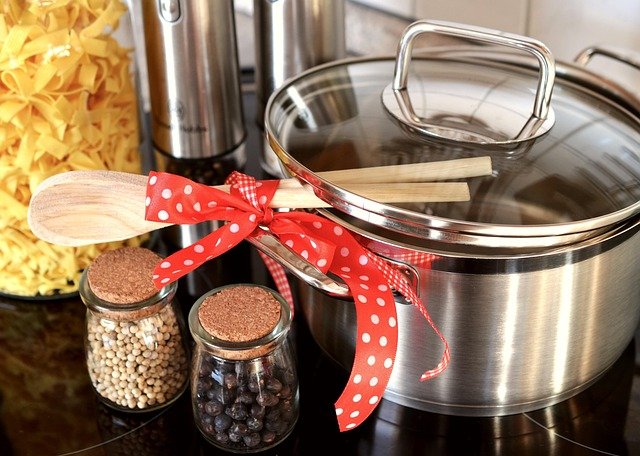Cookware Guide: Materials, Uses, and Care
Choosing the right cookware affects how food cooks, how long cookware lasts, and how easy cleanup will be. This guide explains common materials, how to match pieces to your cooking style, and practical care tips. It aims to help you make informed, durable choices whether you’re outfitting a small kitchen or updating a set for everyday use.

What materials are cookware made from?
Cookware is commonly made from stainless steel, cast iron, carbon steel, aluminum (including hard-anodized), copper, and various coated surfaces like PTFE (nonstick) or ceramic. Each material has different thermal properties: copper and aluminum conduct heat quickly and evenly, which is useful for precise temperature control. Stainless steel is durable and nonreactive, often paired with an aluminum or copper core to improve heat distribution. Cast iron and carbon steel hold heat well and are favored for searing and slow cooking. Nonstick and ceramic-coated pans reduce the need for oil and make low-fat cooking easier but can be less durable and require gentler handling.
How do I match cookware to my cooking style?
Match cookware to the techniques you use most. For high-heat searing, a heavy-bottomed stainless steel pan or well-seasoned cast iron skillet works best. For delicate foods like eggs or pancakes that stick easily, a nonstick or ceramic pan provides a smoother release. Copper or aluminum-core pans are useful for sauces or tasks where immediate temperature response matters. If you frequently use an oven, check oven-safe temperatures and handle materials. For induction cooktops, choose cookware with a magnetic base (stainless steel with a ferromagnetic layer or specially designed induction-ready pans). Consider sized pieces that fit the burners you use most to avoid heat loss and improve efficiency.
What should I know about cookware performance and safety?
Consider reactivity and coating performance. Reactive metals like bare aluminum and copper can interact with acidic foods, altering flavor and potentially affecting finish; many pieces are lined to prevent this. Nonstick coatings offer easy release but can degrade if overheated or scratched; follow manufacturer temperature limits and avoid metal utensils. When assessing safety, look for manufacturer information on coating composition and recommended care. For oven use, verify handle materials and maximum temperatures. Longevity also relates to maintenance—regularly checking for warping, loose handles, or flaking coatings helps you replace or repair cookware before performance or safety issues arise.
How should I care for different cookware types?
Care routines vary by material. Stainless steel tolerates dishwasher cleaning but often benefits from hand washing to maintain shine; use gentle scrubbing and soak to remove stuck-on food. Cast iron and carbon steel require seasoning: clean with hot water and a brush (no soap if possible), dry immediately, and apply a thin oil layer to maintain the seasoned surface and prevent rust. Nonstick pans should be washed with nonabrasive sponges and stored carefully to avoid scratching; replace them when the surface shows significant wear. Copper needs polishing to maintain its appearance unless it has a protective lining; anodized aluminum is more scratch resistant but still should avoid strong abrasives. Always consult manufacturer guidance for temperature limits and cleaning recommendations.
Are sustainability and value considerations important?
Durability often determines sustainability: long-lasting cookware reduces waste compared with frequently replaced items. Materials such as stainless steel and cast iron are widely recyclable and can remain functional for decades if properly maintained. Repairable items (tightening handles, replacing lids) enhance long-term value. While newer eco-focused coatings and manufacturing processes are emerging, verify manufacturer claims and look for clear information on materials and recyclability. Buying solid single pieces that match your cooking habits can be more economical and environmentally responsible than purchasing large sets with seldom-used items.
Conclusion
Selecting cookware is a balance of material properties, cooking habits, maintenance willingness, and safety considerations. Understanding how different metals and coatings behave, choosing pieces suited to your heat source and common dishes, and committing to proper care will help cookware perform well over time. Thoughtful choices focused on use and longevity tend to deliver the most consistent results in the kitchen.






